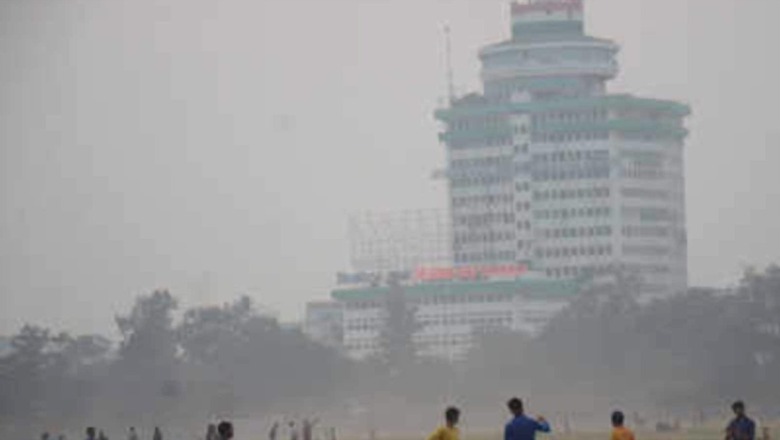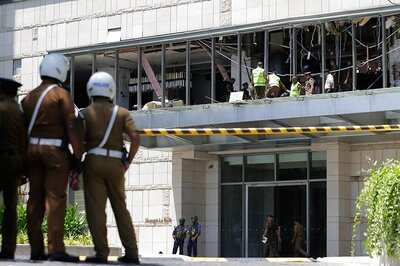
views
As we move further into winter months, Delhi’s Air Quality Index (AQI) continues to remain in the “very poor” category, at 320, on Sunday morning. This comes as the pollution levels have marginally improved, owing to strong winds, taking a step back from the “severe” AQI.
However, farm fires raging in the neighboring Punjab and biomass-burning has prevented a significant improvement in pollution.
On Saturday, the worst polluted towns in the country were all from Bihar and their AQI remained in the “severe” category.” The capital’s 24-hour average air quality index (AQI) stood at 303 on the same day, improving from 346 on Friday. On Thursday, this had gone down to 295.
Why has Delhi’s AQI improved marginally?
According to the India Meteorological Department (IMD), winds speed rising up to 18 – 20 kmph has been the reason behind the better visibility and improved pollution.
The Centre’s air quality commission has also noted that north-westerly wind flow is conducive for an increase in the impact of farm fires on the capital’s air quality.
Along with this, farm fires in Punjab dipped from 3,916 on Friday, the highest this season so far, to 2,467 on Saturday, according to data from the Indian Agricultural Research Institute (IARI).
Subsequently, the stubble burning’s impact on the lung-damaging PM2.5 pollution also declined from 19 per cent on Friday to 17 percent on Saturday.
What is Delhi’s top contributor of pollution now?
Data from the Decision Support System of the Indian Institute of Tropical Meteorology showed that “biomass burning” was the top contributor to air pollution in Delhi-NCR on Saturday.
In terms of restrictions, the stage 3 of Graded Response Action Plan (GRAP) will continue in the city. Under this, all construction and demolition work, except for essential projects continues to remain banned. Brick kilns, hot mix plants and stone crushers are also not allowed to operate.
Has stubble burning decreased?
Between September 15 to November 12, a total of 43,144 instances of farm fires have been recorded this year, Punjab Remote Sensing Centre data says.
This is 27 per cent less as compared to 58,976 instances of stubble burning recorded in 2021. The year before that, over 71,000 such instances were reported in the same period.
What about other states?
While Delhi has become synonymous with high pollution levels in the country, Bihar continued to remain the worst in terms of AQI on Saturday.
Across the nation, there were only 3 towns in which the AQI remained in the “severe” category, and they were all in Bihar, according to The Times of India.
The Central Pollution Control Board showed that the most polluted places in the country — Motihari (419), Siwan (417) and Darbhanga (404) — were all in Bihar. The pollution levels were in “poor” or above categories at all monitoring stations in the state.
Air quality at many places in Haryana and Punjab on Saturday evening was recorded in the ‘moderate’ and ‘poor’, categories. The air quality index in Haryana’s Jind was recorded at 293, according to the Central Pollution Control Board (CPCB) data.
Among other areas in Haryana, Gurugram reported AQI at 288, followed by 274 in Faridabad, 234 in Bahadurgarh, 224 in Fatehabad, 219 in Sonipat, 175 in Manesar, 174 in Panipat and 115 in Ambala.
With agency inputs
Read all the Latest India News here


















Comments
0 comment